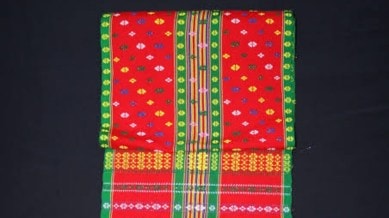ForumIAS announcing GS Foundation Program for UPSC CSE 2025-26 from 19 April. Click Here for more information.
ForumIAS Answer Writing Focus Group (AWFG) for Mains 2024 commencing from 24th June 2024. The Entrance Test for the program will be held on 28th April 2024 at 9 AM. To know more about the program visit: https://forumias.com/blog/awfg2024
Source- The post on Risa Textile is based on the article “Tripura’s traditional tribal attire ‘risa’ gets GI tag: CM Manik Saha” published in “The Hindu” on 3rd March 2024.
What is the News?
Recently, Tripura’s traditional tribal attire ‘Risa’ got GI tag.
About Risa

1. About Risa: It is a traditionally handwoven cloth used as a female upper garment, and also as headgear, a stole, or a present to express respect.
2. Origin of the attire: The Tripuri attire is believed to have existed before the rule of the Manikya kings, who reigned over Tripura for over 500 years from the 15th century.
3. Risa is common in almost all 19 indigenous tribal communities of Tripura. Each community has its own design. The traditional Tripuri female attire consists of three parts — risa, rignai and rikutu.
4. Rignai is primarily worn as the lower garment and literally means ‘to wear’. It is an indigenous variety of the sari of mainland India.
5. Rituku is mainly used as a wrap, or like a ‘chunri’ or a ‘pallu’ of the Indian saree. It is also used to cover the heads of newly married Tripuri women.
7. Significance: It hold scrucial social, cultural and religious significance in Tripura:
i) Social Significance: Risa has a crucial social and religious significance as adolescent Tripuri girls are first given a risa to wear in an event called Risa Sormani, at age 12 to 14.
ii) Religious significance: The risa is used in religious festivals such as Garia Puja by tribal communities, a turban by men during weddings and festivals, a cummerbund over the dhoti.
iii) It is also used as a headscarf by young girls and boys, and as a muffler during winters. The cloth is also used as a makeshift hanger to hold an infant on mothers’ backs.
iv) It is presented as a mark of honour to distinguished recipients.
UPSC Syllabus: Art and Culture




